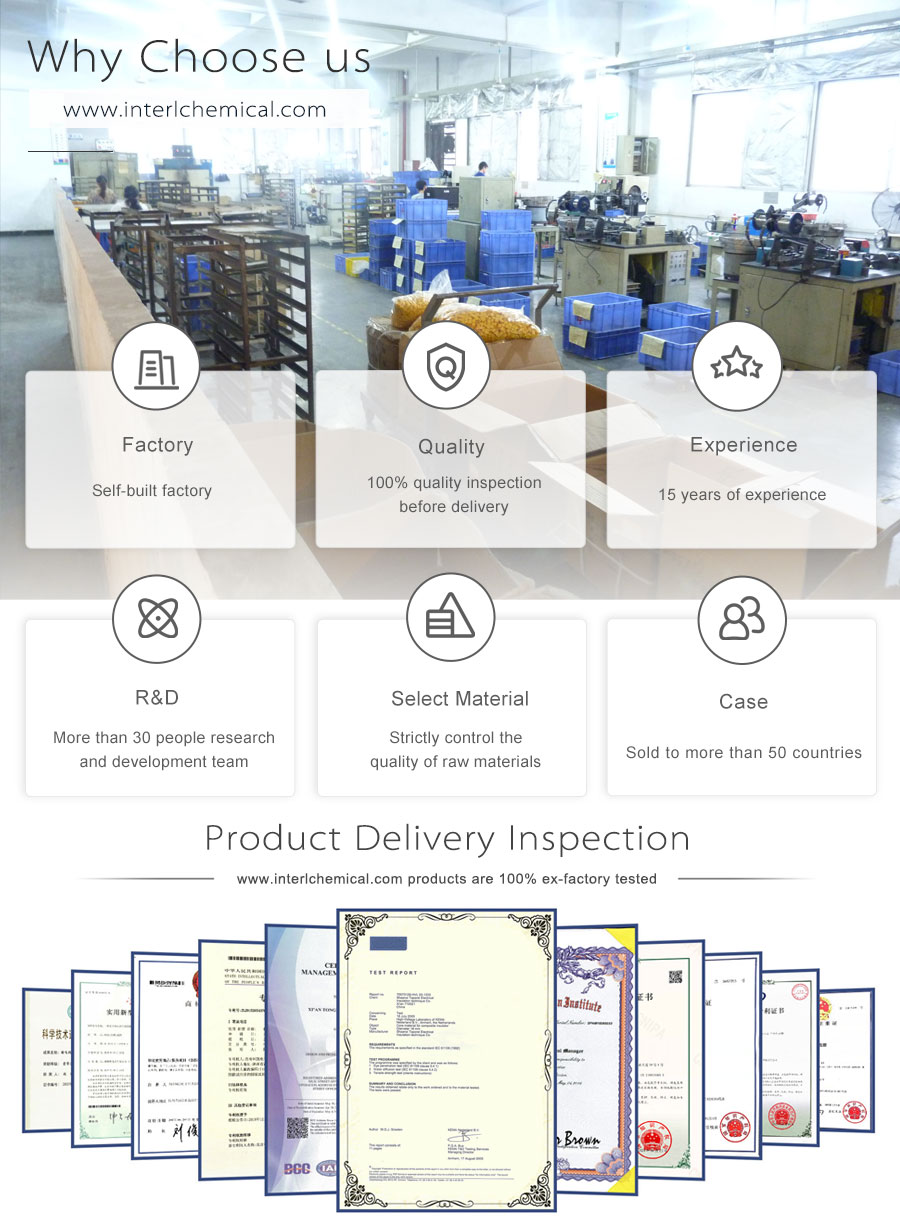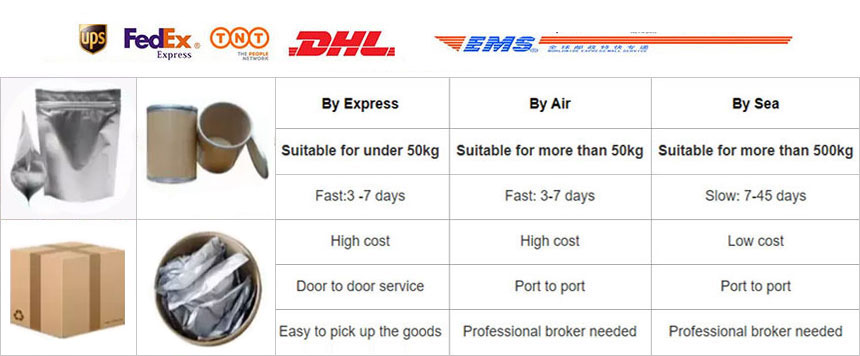Phone: 86-29-89601602
Mail: sales27@interlgroup.com
Add: Room 305 , 3/F , Haipai Decoration Office Building , Yudu Avenue , Yuncheng , Shanxi
Factory Supply 4-Hydroxytoluene Powder CAS 106-44-5 Raw Materials
Product Overview:
4-Hydroxytoluene Powder is also known as antioxidant 264, antioxidant antioxidant T501; the product is used as a raw material intermediate and disinfectant of TMB (dibromoformaldehyde) and TMP (3,4,5-trimethoxybenzaldehyde) in medicine; it is also an important intermediate in pesticide production; 4-Hydroxytoluene Powder is used for the manufacture of phenolic resins and plasticizers, etc. in the plastics industry. 4-Hydroxytoluene Powder is used in the manufacture of phenolic resins and plasticizers in the plastics industry, etc. 4-Hydroxytoluene CAS 106-44-5 is used as antioxidant 264(2,6-di-tert-butyl-p-cresol). Packing: 200KG galvanized drums or standard cans.
4-Hydroxytoluene CAS 106-44-5 Chemical formula: C7H8O, molecular weight: 108.13, is toluene as raw material, sulfuric acid as sulfonating agent, sulfonation, neutralization, alkali fusion, acidification, separation and obtained by the colorless liquid with a special smell or crystals, combustible, insoluble in water, can be dissolved in ethanol, ethyl ether, chloroform and hot water, etc. 4-Hydroxytoluene is used as antioxidant 264(2,6-di-tert-butyl-p-cresol). Hydroxytoluene CAS 106-44-5 is weakly acidic, generates soluble sodium salt with sodium hydroxide, but not with sodium carbonate; p-cresol sodium salt reacts with dimethyl sulfate alkylating agent to generate phenol ether; it reacts with aldehydes to get synthetic resins; it catalyzes the hydrogenation to generate methylcyclohexanol.4-Hydroxytoluene Raw Materials are easy to oxidize, the color will be darkened when contacted with light and air, and quinones and other complex compounds will be generated.
Factory Supply 4-Hydroxytoluene Powder CAS 106-44-5 Raw Materials Attributes
MF:C7H8O
MW: 108.14
EINECS:203-398-6
Specification:4-Hydroxytoluene Powder
Sample:4-Hydroxytoluene Powder
Brand: 4-Hydroxytoluene Powder
Appearance: White Powder
Storage: Cool Dry Place
Brand: Globalchemical
Shelf Life: 2 Years
Test Method: HPLC
Factory Supply 4-Hydroxytoluene Powder CAS 106-44-5 Raw Materials Details
Uses and synthesis of 4-Hydroxytoluene Powder
4-Hydroxytoluene Powder is also known as antioxidant 264, antioxidant antioxidant T501; the product is used as a raw material intermediate and disinfectant of TMB (dibromoformaldehyde) and TMP (3,4,5-trimethoxybenzaldehyde) in pharmaceuticals; it is an important intermediate in pesticides; 4-Hydroxytoluene Powder is used for the manufacture of phenolic resins and plasticizers in the plastics industry. 4-Hydroxytoluene Powder is used in the manufacture of phenolic resins and plasticizers in the plastics industry.

4-Hydroxytoluene CAS 106-44-5 is used as antioxidant 264(2,6-di-tert-butyl-p-cresol). Packing: 200KG galvanized drums or standard cans.
4-Hydroxytoluene CAS 106-44-5 chemical formula: C7H8O, molecular weight: 108.13, is toluene as raw material, sulfuric acid as sulfonation agent, sulfonation, neutralization, alkali fusion, acidification, separation and obtained by the colorless liquid with a special smell or crystals, combustible, insoluble in water, soluble in ethanol, ether, chloroform and hot water.
4-Hydroxytoluene CAS 106-44-5 is weakly acidic, and sodium hydroxide to generate soluble sodium salt, but not with sodium carbonate; p-cresol sodium salt and dimethyl sulfate alkylating agent reaction, generate phenol ether; and aldehydes to get synthetic resins; catalytic hydrogenation to generate methylcyclohexanol.4-Hydroxytoluene Raw Materials are easy to oxidize, the color will be darkened when contacted with light and air, and quinones and other complex compounds will be formed.
4-Hydroxytoluene Powder is an important basic raw material for the production of fine chemicals, with a wide range of extension and reproduction of downstream products.
4-Hydroxytoluene Raw Materials is mainly used for the production of antioxidants for synthetic materials, such as antioxidant 264 (referred to as BHT) is a widely used antioxidant in plastics, the dosage of ** antioxidants, with good antioxidant effect, high thermal stability, no pollution of plastics, no coloring, and good compatibility with plastics.

4-Hydroxytoluene CAS 106-44-5 can also be used in the production of nearly 100 kinds of downstream products such as pharmaceutical intermediates, disinfectants, dyes and pesticides. Antioxidants, plasticizers and UV absorbers made from high-purity p-toluene have greatly improved the quality of organic synthetic materials.
Applications / Functions of 4-Hydroxytoluene Powder
- 4-Hydroxytoluene Powder GB2760-1996 is permitted to be used as edible flavor.
- 4-Hydroxytoluene CAS 106-44-5 Fungicide. Anti-mildew agent. Organic synthesis.
- 4-Hydroxytoluene Powder is used in organic synthesis.
- 4-Hydroxytoluene CAS 106-44-5 is the raw material for the manufacture of antioxidant 2,6-di-tert-butyl-p-cresol and rubber antioxidant, and at the same time, it is an important basic raw material for the production of pharmaceutical TMP and dye Colistin sulfonic acid.
- 4-Hydroxytoluene Raw Materials is the intermediate of fungicide Methyl Likufos, insecticide Cyhalothrin and Ethermethrin, and also the intermediate of antioxidant additives 2,6-di-tert-butyl-4-methylphenol and p-hydroxybenzaldehyde.
- Raw material for manufacturing antioxidant 264 (2,6-di-tert-butyl-p-cresol) and rubber antioxidant. In the plastics industry to manufacture phenolic resins and plasticizers. Used as a disinfectant in medicine. In addition, it can also be used as raw material for dyes and pesticides.
4-Hydroxytoluene Powder properties and stability
4-Hydroxytoluene Raw Materials Colorless to pink crystals, smoky, herbal odor. Relative density (d420) 1.0178, refractive index (nD20) 1.5312, melting point 34.8 ℃, boiling point 201.9 ℃, flash point 86.1 ℃. Soluble in water (2.3%/40℃), soluble in caustic alkaline solution and common organic solvents. Natural products exist in ylang-ylang oil, strawberries, cheese, coffee, cocoa and so on.

- 1. 4-Hydroxytoluene Raw Materials is weakly acidic, and interacts with sodium hydroxide to form a soluble sodium salt, but does not interact with sodium carbonate. The sodium salt of p-cresol reacts with alkylating agents such as dimethyl sulfate to form phenol ethers. Reacts with aldehydes to obtain synthetic resins. Catalytic hydrogenation produces methylcyclohexanol. Under mild conditions, p-cresol can be nitrated, halogenated, alkylated and sulfonated. P-cresol is easy to oxidize, with light and air contact color will be darkened, resulting in quinones and other complex compounds.
- 2. Stability: stable
- 3. Prohibited substances: strong oxidizing agents, alkalis
- 4. Avoid contact conditions: light
- 5.Hazard of polymerization: non-polymerization
Production method of 4-Hydroxytoluene Powder
- 4-Hydroxytoluene Powder mixture after extraction of m-cresol mother liquor, can be oxalic acid addition method for recrystallization.
- Toluene and sulfuric acid are sulfonated and neutralized, and the generated sodium p-toluene sulfonate is then fused with alkali, acidified, and distilled to obtain the finished product of p-cresol. In order to get a higher purity of p-cresol there are two processes:
- (1) The p-cresol obtained after distillation is then separated by crystallization;
- (2) After sulfonation, p-toluene sulfonic acid is first cooled, crystallized, filtered, then neutralized, alkali melting, acidification, distillation and finished products. Nanjing Jinyan Chemical Corporation developed the sulfonation alkali melting method technology is mature, can produce high purity p-cresol, change the process conditions, the use of the device can also produce m-cresol, o-cresol, phenol, naphthol, etc..
Production methods The preparation methods are as follows.
- (1) Toluene sulfonation alkali fusion method Toluene as raw material, sulfuric acid as sulfonating agent, sulfonation reaction at 110 ~ 130 ℃ to generate intermediate toluene sulfonic acid, after neutralization at 340 ~ 365 ℃ with molten sodium hydroxide alkali fusion reaction, sodium cresol, after acidification of crude cresol, and then distillation to separate out the o-cresol and phenol, to get the main body of the p-cresol between the p-cresol, the m-, p-mixed cresol. Temperature change, type of sulfonating agent and the ratio of toluene to sulfonating agent determine the composition of isomers in the generated cresol. Nanjing Jinyan Chemical Corporation adopts sulfonation alkali fusion method to produce high purity p-cresol. Other commonly used sulfonating agents are fuming sulfuric acid and chlorosulfonic acid. Toluene sulfonation method for the preparation of p-cresol is the earliest industrialized method, this method is more mature, but requires the consumption of a large number of acids, alkalis, equipment corrosion problems, the method is still the main method of production of p-cresol. Between, p-cresol mixture after the extraction of m-cresol mother liquor available oxalic acid addition method for recrystallization. For example, the urea with filtered toluene solution heated to 95 ~ 100 ℃, stirring to add oxalic acid reaction 2 ~ 3h, and then cooled at room temperature for about 16h, vacuum filtration of white crystals that is p-cresol oxalic acid compounds. This compound will be decomposed with hot water, the upper oil layer first regular pressure distillation for toluene and water evaporation, and then in the vacuum degree of 0.094MPa cut 93 ~ 104 ℃ fraction that is obtained for the purity of 95% p-cresol.
- (2) p-Toluidine diazoxide hydrolysis method P-toluidine and sulfuric acid to generate p-toluidine sulfate, at 0 ~ 5 ℃ with sodium nitrite for diazotization, and then the diazonium salt in dilute sulfuric acid heating and hydrolysis, the steam will be divided into oil, the oil layer is added to 1% sodium hydroxide, plus decolorization and filtration, add concentrated sulfuric acid to pH = 1, and then the aqueous layer is divided into zinc and sulfuric acid, and then neutralize with sodium carbonate to neutral, the oil layer is divided into oil, washed, and then Decompression distillation to get the finished product.
- (3) Separated from kerosen Sulfonation of toluene with sulfuric acid, p-toluene sulfonic acid, cooling, crystallization, filtration, and then add sodium sulfite neutralization, sodium p-toluene sulfonate, then sodium hydroxide alkaline melting, sodium p-toluene phenol, and then acidified by sulfurous acid. Finally, it is separated by distillation and crystallization.










